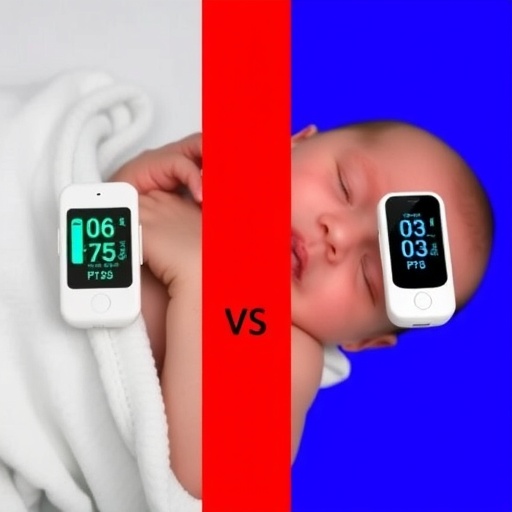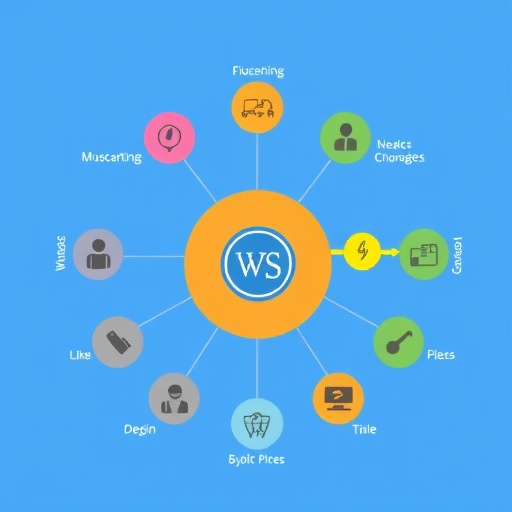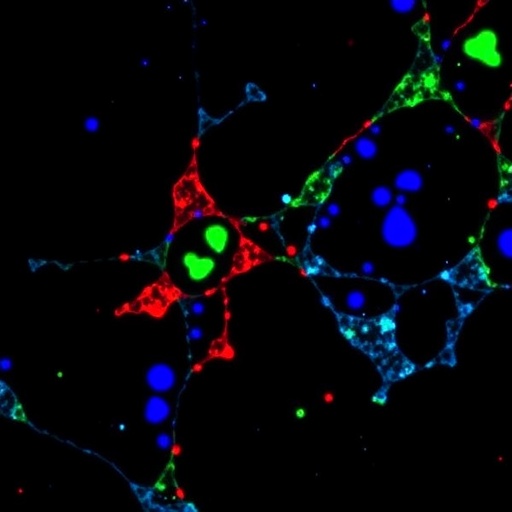
In the high-stakes environment of neonatal intensive care, where every second counts and a single reading can influence life-or-death decisions, the tools clinicians rely on must provide flawless performance. Among these tools, pulse oximeters stand as critical instruments, quietly translating the oxygen saturation of fragile newborns into vital data that shapes urgent interventions. However, recent research has spotlighted the nuanced but significant performance differences between leading pulse oximetry systems, particularly under the demanding and complex conditions encountered in neonatal care. This revelation emerges from a pioneering study by King et al., published in the Journal of Perinatology in 2025, which embarked on a rigorous comparative analysis using a sophisticated vital signs simulator to push pulse oximeters beyond the boundaries of standardized testing.
The essence of pulse oximetry lies in its non-invasive methodology—employing light absorption techniques to estimate arterial oxygen saturation (SpO2). Clinically, this technology enables healthcare providers to continuously monitor oxygen delivery in neonates, whose underdeveloped respiratory systems often struggle to maintain adequate oxygen levels. Yet, despite decades of technological refinement and broad clinical adoption, critical questions remain about the relative reliability and responsiveness of different pulse oximetry devices when subjected to extreme physiological states that infants may encounter. King and colleagues approached this challenge with meticulous technical scrutiny, focusing on simulated scenarios that replicate critical neonatal conditions, such as hypoxemia, perfusion deficits, and variable respiratory patterns.
Utilizing a state-of-the-art vital signs simulator, the study created controlled environments that emulate the diverse and dynamic physiology of neonates in distress. This approach transcended conventional clinical verification methods which typically assess devices under stable or mildly fluctuating clinical conditions. The importance of this method cannot be overstated, as real-world neonatal intensive care units (NICUs) frequently face rapidly evolving conditions wherein pulse oximeters must not only detect shifts in oxygenation quickly but also maintain accuracy in low perfusion, high motion artifact settings, and variable hemoglobin states. By stress-testing devices in these synthetic but clinically relevant contexts, the research unveiled performance discrepancies that could otherwise remain masked in routine clinical use.
.adsslot_Z8kjzBetv0{width:728px !important;height:90px !important;}
@media(max-width:1199px){ .adsslot_Z8kjzBetv0{width:468px !important;height:60px !important;}
}
@media(max-width:767px){ .adsslot_Z8kjzBetv0{width:320px !important;height:50px !important;}
}
ADVERTISEMENT
One of the most striking findings outlined in the study was the differential responsiveness of two commercially prevalent pulse oximetry systems when exposed to rapid desaturation events. While both devices demonstrated comparable accuracy at steady-state oxygen levels, one system showed a consistently faster detection of oxygen desaturation—an attribute that could translate into earlier clinical response and improved outcomes. The lag in detection observed in the other system raises concerns about potential delays in administering life-saving interventions, underscoring the critical need for device-specific performance characterization beyond headline accuracy metrics.
Furthermore, the research delved into the impact of signal dropout and motion artifacts, two notorious challenges that impair pulse oximeter performance in the NICU. Neonates are often restless; movement-induced noise in photoplethysmographic signals complicates the accurate calculation of SpO2 values. The study’s simulator incorporated dynamic artifact generation, revealing that one system maintained signal fidelity and user alertness better under these conditions, whereas the other system exhibited higher rates of signal loss and false alarms. These insights highlight the delicate balance pulse oximeters must strike between sensitivity and specificity, especially when false alarms can cause alarm fatigue among caregivers while false negatives risk missing critical hypoxic episodes.
Adding complexity, hypoperfusion—reduced blood flow commonly encountered in premature or sick neonates—was simulated to assess the devices’ performance under suboptimal perfusion. The researchers observed that performance divergences widened considerably under these conditions; one system preserved stable and accurate oxygen saturation readings despite diminished pulsatile flow, while the other showed significant variability and decreased reliability. Given that accurate SpO2 readings in hypoperfused states are essential for tailoring oxygen therapy and avoiding both hypoxia and hyperoxia, these findings carry profound clinical consequences.
The article emphasizes the urgency to re-evaluate standardized pulse oximeter validation protocols, which traditionally rely on healthy adult volunteers or stable pediatric cohorts. King et al.’s approach provides a compelling argument for incorporating neonatal-specific and physiologically extreme simulations into regulatory testing frameworks—ensuring that the devices introduced into NICUs can withstand the realities of critical care. Moreover, the study advocates for clinicians and procurement teams to demand transparent, context-driven performance data from manufacturers to make informed choices that align with their patient populations’ complexities.
An additional layer of sophistication in the study involved spectral analysis of the pulse oximeter signal processing algorithms. The researchers dissected how each system’s proprietary algorithms parse raw photoplethysmographic inputs to filter noise and detect true arterial signals, particularly focusing on their ability to handle non-linearities inherent in neonatal vasculature. This technical breakdown not only explains performance differences observed but also suggests avenues for future algorithmic enhancements that could bridge current gaps in device responsiveness and robustness.
Interestingly, the study also explored the implications of technological variance on long-term outcomes by simulating extended monitoring scenarios. Prolonged recordings in simulated neonatal distress revealed that variability in pulse oximetry accuracy could significantly affect cumulative oxygen exposure decisions, including the initiation or titration of supplemental oxygen. Since both hypoxia and hyperoxia carry risks of neurodevelopmental impairment and retinopathy of prematurity, the ripple effect of device choice extends beyond immediate clinical responses.
King et al.’s investigation is a vital contribution to the discourse surrounding neonatal patient safety and medical device optimization. It invites a multidisciplinary dialogue among neonatologists, biomedical engineers, regulatory agencies, and manufacturers to foster a collaborative ecosystem dedicated to enhancing monitoring precision under the unique challenges posed by neonatal critical care. The research underscores that excellence in neonatal monitoring requires not only technological advancements but also rigorous, context-specific evaluation paradigms that reflect true clinical use environments.
Moreover, the implications of this study resonate beyond neonatal care, hinting at analogous challenges in other critical care populations—such as adults with compromised peripheral circulation or patients undergoing complex surgical procedures—where precise oxygen monitoring remains pivotal. The framework developed by King and colleagues thus sets a precedent for future exploration and refinement of monitoring technologies applicable across medical specialties.
In an era where healthcare increasingly leverages data-driven decision-making, the fidelity and reliability of foundational monitoring tools like pulse oximeters assume paramount importance. The study’s findings call for renewed vigilance and innovation in pulse oximetry development, encouraging a trajectory toward smarter, adaptive devices capable of maintaining diagnostic accuracy amidst the unpredictable physiology of critically ill neonates.
Ultimately, King et al.’s research illuminates an essential truth: in neonatal care, the nuances of monitoring technology performance profoundly influence clinical outcomes. As the medical community strives for precision medicine and optimized patient safety, such nuanced investigations serve as catalysts propelling technology and clinical practice forward. The future of neonatal pulse oximetry—and by extension, the breath of countless newborns—hinges on recognizing and addressing these critical performance differentials.
Subject of Research: Performance comparison of two pulse oximetry systems under simulated critical neonatal conditions.
Article Title: Identifying performance differences between two pulse oximetry systems in simulated critical neonatal conditions.
Article References:
King, B., Dove, J., McGonigle, S.J. et al. Identifying performance differences between two pulse oximetry systems in simulated critical neonatal conditions. J Perinatol (2025). https://doi.org/10.1038/s41372-025-02364-4
Image Credits: AI Generated
DOI: https://doi.org/10.1038/s41372-025-02364-4
Tags: advanced medical technology in pediatricsclinical outcomes in neonatologycritical care monitoring toolsneonatal care decision-makingneonatal intensive careneonatal respiratory system challengesnon-invasive oxygen monitoring technologyoxygen saturation in newbornspulse oximetry performance comparisonreliability of pulse oximetersresearch on pulse oximeter accuracyvital signs simulation study





